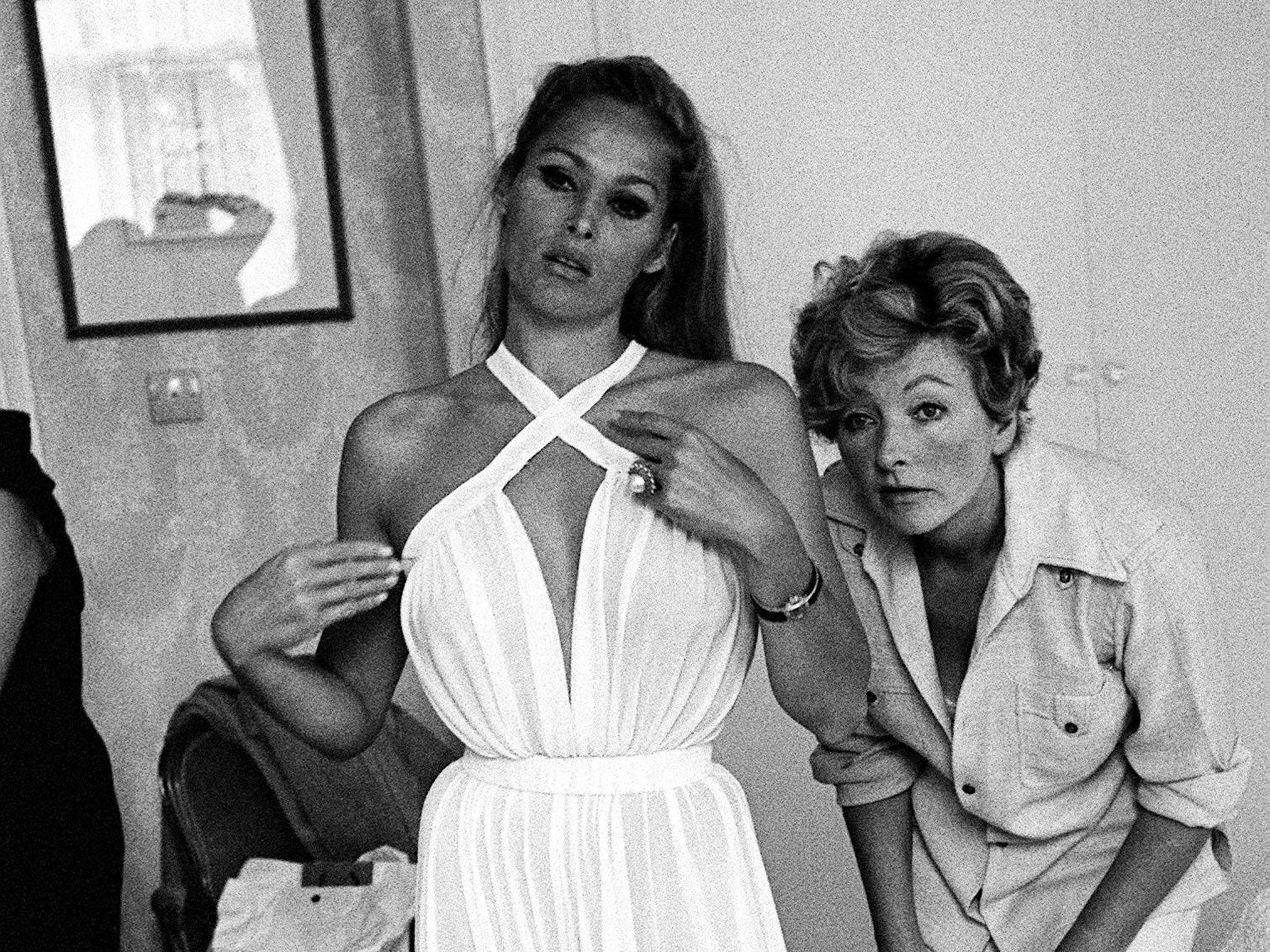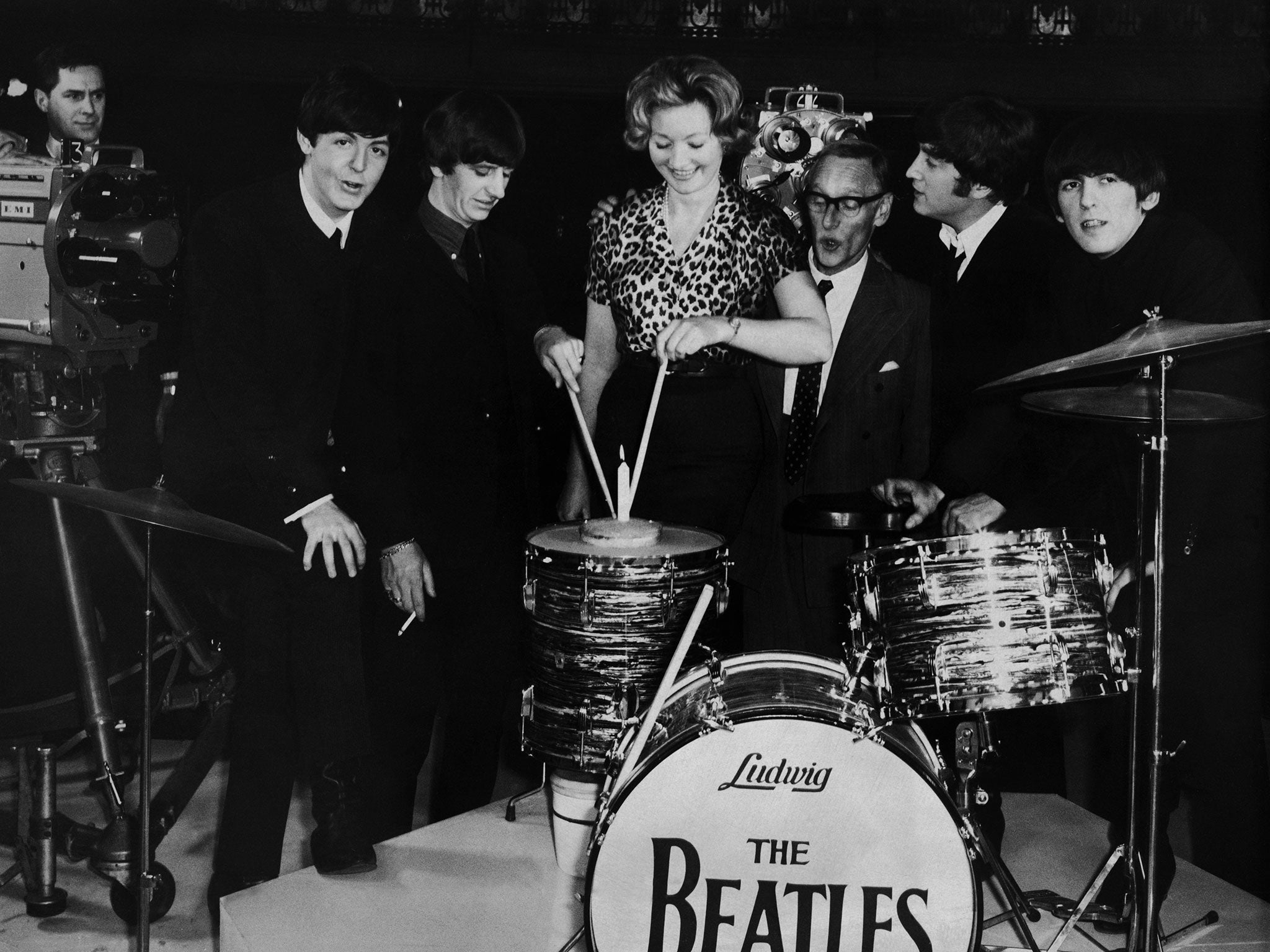Julie Harris brought Sixties fashions to the screen in Darling and the Beatles' films
The Oscar-winning costume designer died last week, but her legacy lives in Hollywood's history

Your support helps us to tell the story
From reproductive rights to climate change to Big Tech, The Independent is on the ground when the story is developing. Whether it's investigating the financials of Elon Musk's pro-Trump PAC or producing our latest documentary, 'The A Word', which shines a light on the American women fighting for reproductive rights, we know how important it is to parse out the facts from the messaging.
At such a critical moment in US history, we need reporters on the ground. Your donation allows us to keep sending journalists to speak to both sides of the story.
The Independent is trusted by Americans across the entire political spectrum. And unlike many other quality news outlets, we choose not to lock Americans out of our reporting and analysis with paywalls. We believe quality journalism should be available to everyone, paid for by those who can afford it.
Your support makes all the difference.One of cinema’s leading costume designers for more than 40 years, Julie Harris dressed some of the world’s biggest stars, from the screen sirens Bette Davis, Joan Crawford, Lauren Bacall and Jayne Mansfield to male institutions such as Gary Cooper, Alan Ladd and Gregory Peck.
A high point was winning an Oscar after creating a modern look for Julie Christie’s bed-hopping, free-spirited model in the modish 1965 film Darling, which captured the freedoms being enjoyed – and exploited – at the height of the Swinging Sixties. Christie herself won the Best Actress Oscar for her performance in the John Schlesinger-directed film made in black and white.
Modestly, Harris declared that she would not have won her own Academy Award but for it being the last year that Best Costume Design honours were given to both mono and colour pictures (Doctor Zhivago, also featuring Christie, took the Oscar for colour costume design), but her creations of the star’s above-the-knee skirts, headscarves, skimpy nightwear and bikini, and a medieval costume added their own colour to the film.
Harris was firmly in the vanguard of 1960s fashion when she worked on director Richard Lester’s Beatles films A Hard Day’s Night (1964) and Help! (1965), not only dressing the Fab Four but also designing Indian-inspired costumes for Eleanor Bron in the latter. She then provided wardrobes for David Niven, Ursula Andress, Jacqueline Bisset and other candy-coloured, mini-skirted performers in the 1967 James Bond spoof Casino Royale.

However, Harris preferred creating period costumes and particularly enjoyed masterminding the colourful Georgian-style ball gowns for the musical The Slipper and the Rose (1976), director Bryan Forbes’s re-telling of the Cinderella story. For one song in the 1969 musical version of Goodbye, Mr Chips, Petula Clark needed eight different changes of dress, but that was an easy task for Harris compared with remedying the problem of the schoolboys’ ties and hatbands arriving for the first day of filming in Dorset without the necessary stripes. Fortunately, her wardrobe supervisor found local art students to spend all night painting on the white stripes.
Dressing Dame Edith Evans as a “funny, dotty old lady” for The Whisperers (1967) presented different problems. “I had bought a tatty old fur coat for a pound on Portobello Road,” said Harris in a 2002 interview with Josephine Botting. “I put her in this moth-eaten old fur coat and strange felt hat. She still looked like this terribly grand lady. The fur coat was out. It was quite difficult making her look the part.”
Another veteran star, Deborah Kerr, was a favourite of the costume designer and, through working on four films together, they became good friends.
Harris was born in London, daughter of Henry, a business executive, and his wife, Rose (née Taperell), and as a child loved watching Hollywood film musicals. After attending a private school in Maidenhead, Berkshire, and studying at Chelsea School of Art, she worked for a court dressmaker, Nesta Neve. Then in 1941 her arm was badly injured in the Luftwaffe’s bombing of the Café de Paris, a fashionable London cabaret venue, which killed more than 30 people. Harris served with the ATS for the rest of the Second World War.
She began her film career as a design assistant at Gainsborough Pictures, working with its top costume designer, Elizabeth Haffenden, on The Magic Bow (1946). She was quickly promoted to costume designer on Holiday Camp (1947), which introduced the cockney Huggett family to the screen, and over the next six years dressed stars such as Googie Withers, Bette Davis, Patricia Roc, Mai Zetterling, Jean Kent, Joan Collins and Dirk Bogarde.
In 1953 she was contracted to Rank, where she not only designed actors’ film wardrobes but also their costumes for special events. She was less than happy when asked to create a mink bikini for Diana Dors to wear in a gondola trip down the Grand Canal for a Venice Film Festival publicity stunt in 1955. In the event, mink was considered extravagant and, contrary to the publicity, the outfit was made of rabbit fur.
On screen, Harris was experimenting with vivid hues and luxurious fabrics in the Technicolor films You Know What Sailors Are (1953) and Simon and Laura (1955). Dressing Jayne Mansfield for the American West in The Sheriff of Fractured Jaw (1958), she was instructed to raise the sex symbol’s plunging neckline. She did so but had to make the bar-room girls’ necklines even higher when Mansfield saw their costumes. Adept at appeasing demanding stars, she also had to deal with Melina Mercouri’s refusal to wear high-waist dresses in The Gypsy and the Gentleman (1958).
Harris left Rank to go freelance in the 1960s and found herself in great demand with films such as Alfred Hitchcock’s Frenzy (1972), Roger Moore’s first outing as James Bond, Live and Let Die (1973), and Dracula (1979). Her Victorian costumes in The Wrong Box (1966) won her a Bafta Award for Best British Costume.
Before retiring in 1991, Harris spent much of the last decade of her working life on television films such as The Hound of the Baskervilles (1983) and Arch of Triumph (1984), where her costumes and attention to detail did much to add to the period look of those productions. In her later years, she enjoyed painting in oils. She never married.
Diana Julie Harris, costume designer: born London 26 March 1921; died London 30 May 2015.
Join our commenting forum
Join thought-provoking conversations, follow other Independent readers and see their replies
Comments